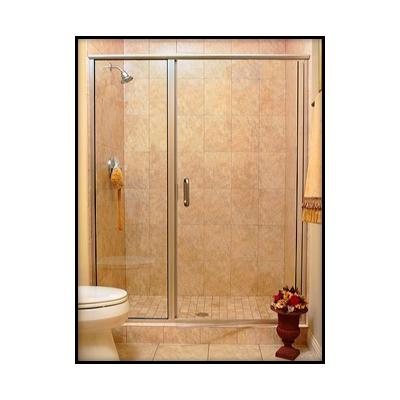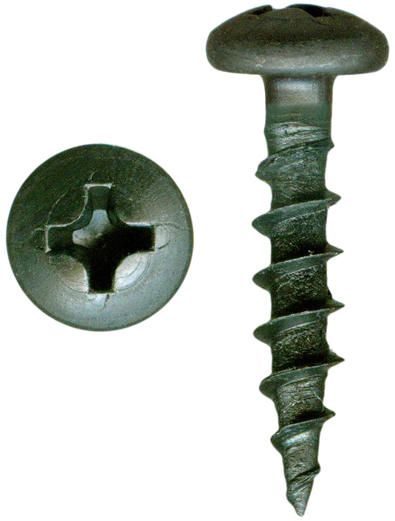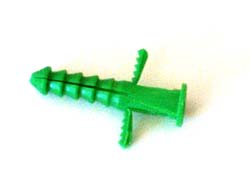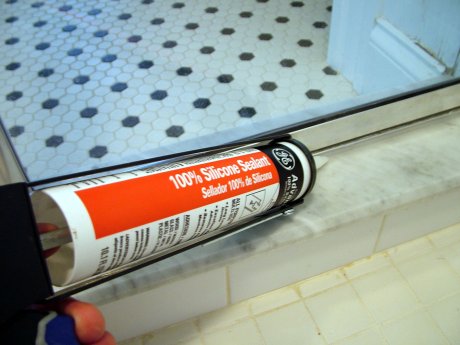 It’s time for another How-to! Today will be about installing a glass shower door with a hinge. Stay tuned later this month for a Sliding glass shower door installation too.
It’s time for another How-to! Today will be about installing a glass shower door with a hinge. Stay tuned later this month for a Sliding glass shower door installation too.
Tools you need:
Level (preferably a long one), measuring tape, 3/16″ masonry bit, 7/32″ twist bit, electric drill, vacuum, hacksaw, utility knife, metal file and caulk smoother.
Stuff you need:
Shower door, frame (including vinyl sweep and drip rail), carpentry pencils, silicone caulk, drop cloth and glass cleaner.
Measure the door width for your shower. Measure at the bottom, top, and middle, to make sure there is no significant drift in width in the opening. Also use a piece of string the width of the door and pull it outwards to check for possible conflict with other objects in the room. If there is a significant variation (over ½ inch) you’ll need to make it even so the door will fit correctly.
Measure, mark and cut your base track/door stop. The track is likely to be aluminum, so use a hacksaw and a firm grip. Do this over a drop cloth so the metal filings can be easily cleaned- you don’t want them to scratch up your bathroom or shower door. Once it’s cut to size, file the cut ends down until smooth. Set the track in its desired position and use a carpenter’s pencil to mark its intended position in case it moves during the next few steps
For a hinged door, mark where the hinge needs to rest in order to matchup with the base track. Make sure to have a long level to ensure its straightness up and down the entire length. Mark through the holes in the jamb where you’ll need to screw it in. Once you remove the track, make a small hole using a hammer and nail to mark where you intend to screw in the jamb. This prevents slippage when drilling. Using an electric drill and a 3/16” bit and bore out each screw hole you marked. Tap in plastic wall anchors in each hole, and then align the jamb with those anchors. Screw in 1 ½” pan screws for each anchor.
Lift the door into place, taking care to make sure it swings outwards. Use your level again to make sure the far edge is straight up and down. Depending on how you screw in your hinge rail, you can help adjust any variance from vertical level. Have someone help you by holding the door, and drill 7/32” holes through the hinge rail into the jamb. Use your pan head screws to fasten the hinge rail to the jamb.
Where the swinging side of the door will meet the other jamb, install the magnetic seal. This should just slip on to the opposite jamb. Make sure that jamb is flush with the wall as well, and then mark its location and holes for drilling just like in the last step. Drill the holes, insert plastic anchors, screw in pan head screws.
Most likely you’ll have a header- measure above the glass portion of the doors and cut your header to size just like you did the track in step 1. On the inside of the shower stall, drill a 7/32” hole on each side. Then use a ½” screw to connect the header and each jamb. Do the same with the base track- this will add stability and cut down on any water escaping your shower. Be careful to do it where the vertical part of the jamb meets the base track, if you drill through your glass door, it will likely need replacement. If door handles did not come preinstalled on your door, install them now. Make sure to install the outside handle first.
Match the width of the drip rail to your door. Be sure to file these ends down too. Cut your vinyl sweep to match. If they come as separate pieces, use pliers to clamp the metal of the groove around the sweep. With the drip rail pointing inside, hold it against the bottom of the glass door. Drill 7/32” holes into the frame through the mounting holes, making sure to miss the glass. Use 1/2 “ screws to attach the rail.
Using mildew resistant silicone caulk, apply a 1/4 “ bead of it on the inside and outside of the base track, as well both jambs. Use a caulk smoother or popsicle stick to give it a clean, even look around the frame. Make sure to let it dry 48 hours before using the shower.
Use a glass cleaner to get rid of any residue or debris that may have gotten on the glass or frame, as well as a vacuum to clean up other work detritus on your floors in and out of the shower.



